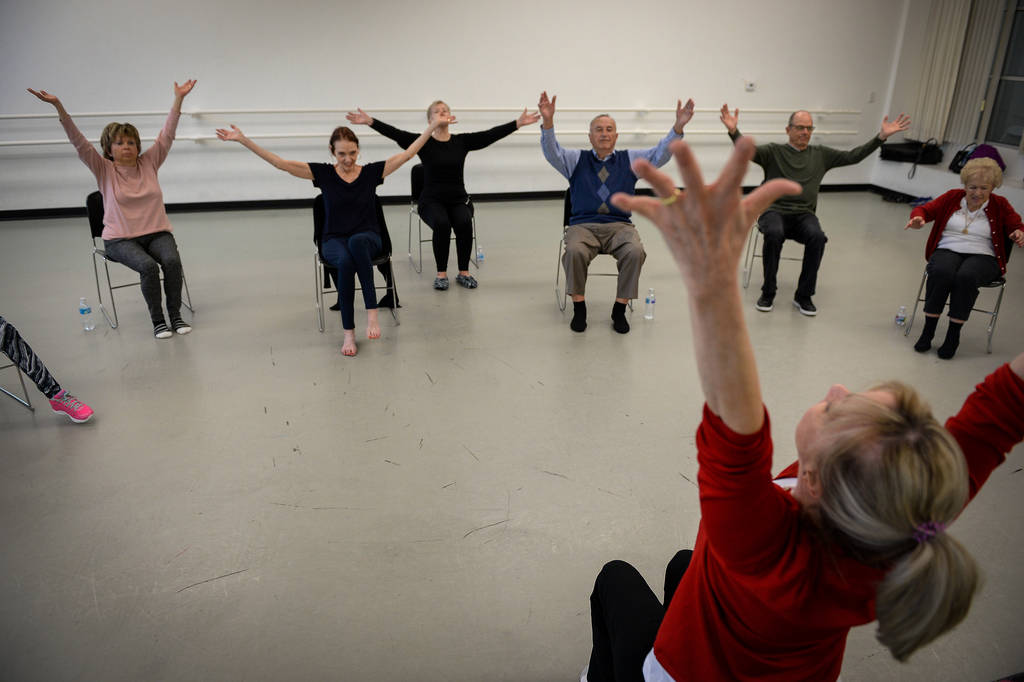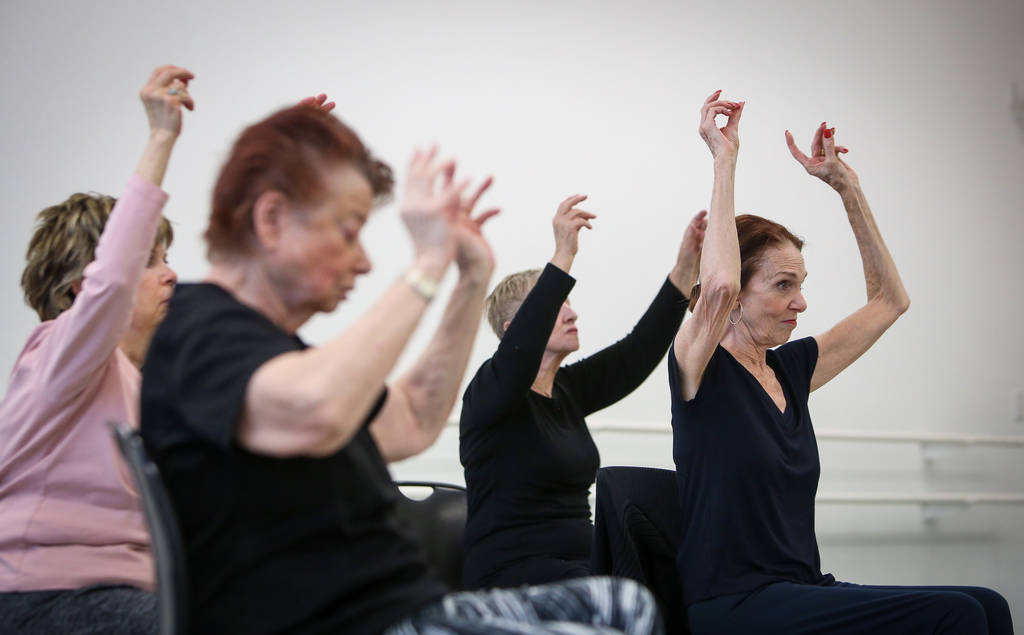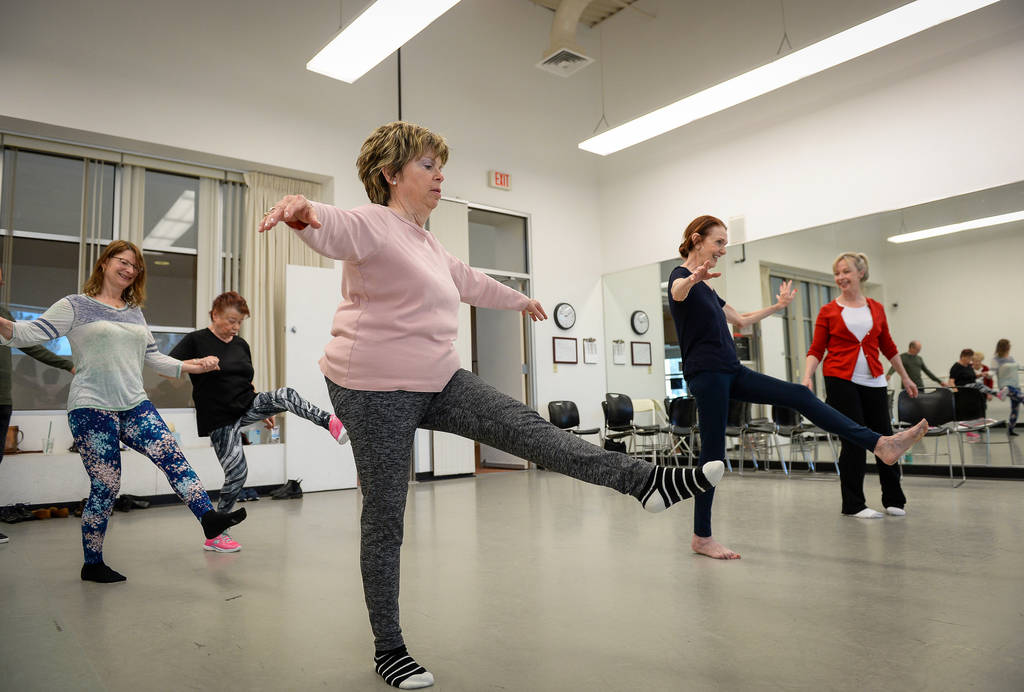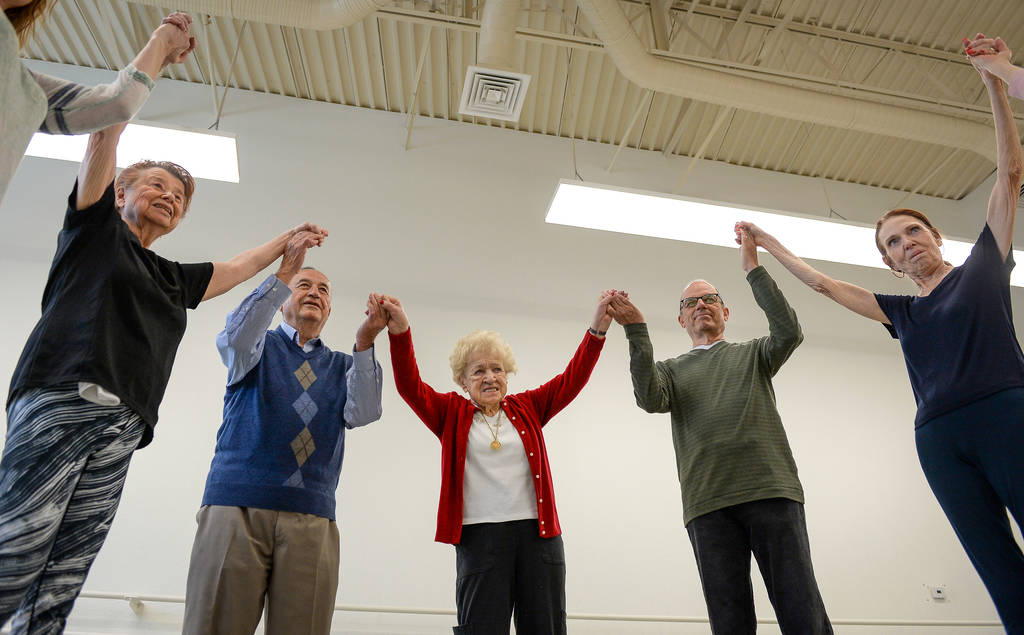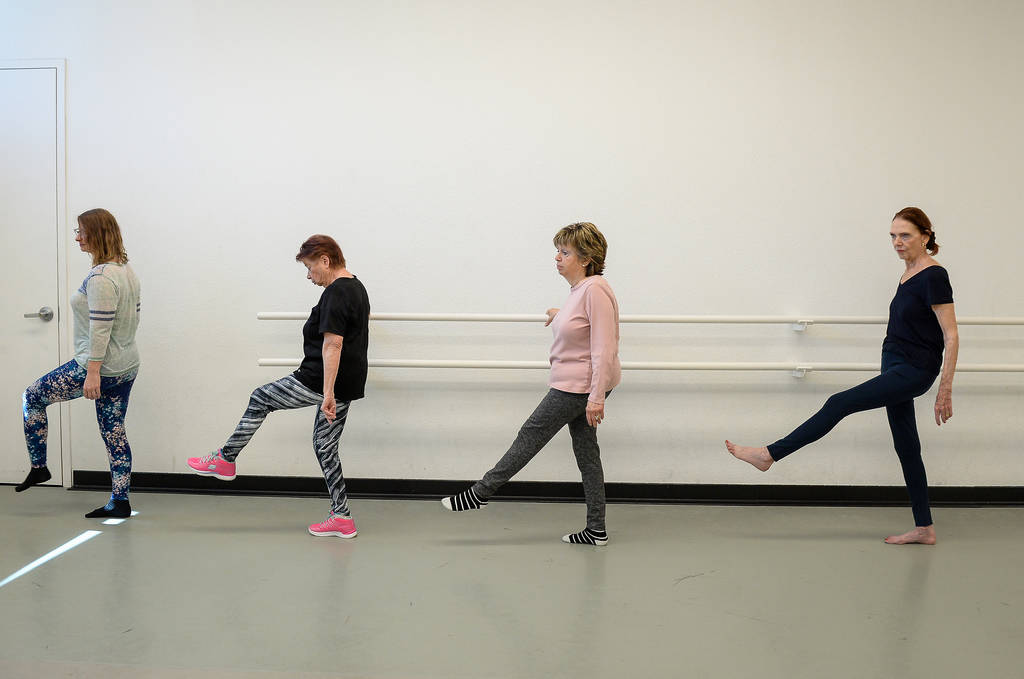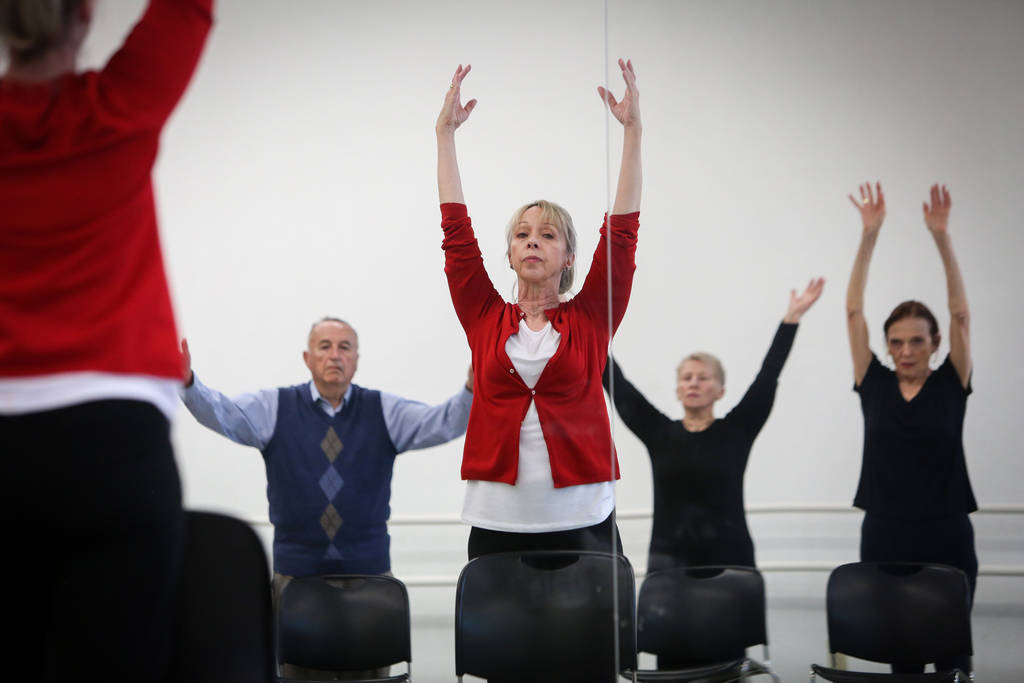Dance classes help people with Parkinson’s in Nevada
Martha Steele has bright blue eyes, pride in reaching her 90s, a love of dance and a devoted nephew who dances alongside her.
She also has Parkinson’s disease.
Steele attends Dancing With Parkinson’s classes twice a week where her instructor, Pamela Lappen, leads students through movements and routines designed to slow the progression of symptoms.
“Parkinson’s is a movement disorder, which is why dance is helpful,” Lappen says. “It helps with balance, cognitive skills, hand-eye coordination and can improve quality of life. It’s not a cure. But research shows that dancing two times a week can help.”
Lappen teaches twice a week, once each at the Nevada Ballet Theatre studio and Las Vegas Dance Academy.
As students file in, they remove their shoes and take seats next to their friends. Lappen considers the socialization aspect to be just as valuable as dancing.
“Parkinson’s can be isolating,” Lappen says. “It’s good to be around people who ‘get it.’ ”
Lappen guides them through seated choreography. She plays a slow-tempoed melodic number as students rock in their seats, bend at the side and pantomime picking a flower from the earth.
A percussion-heavy beat plays as students tap their toes from side to side, raising their hands or extending their feet in front of them.
Lappen encourages students to “think like dancers” by setting intentions in their movements. She chooses music that will cue dancers on how to move next. “When they get stuck and can’t move forward, you learn little things in dance that help you move through space,” she says.
In an improvisational exercise, students sit facing each other in pairs, taking turns mirroring each other’s movements.
Steele’s nephew, Mark Denton, follows along as the 96-year-old taps her thumb to each of her four fingers in succession, an exercise called hand articulation that Lappen says helps develop small motor control.
Students transition from their chairs to line up at the ballet barre and move across the room, Lappen matching the footwork to the song of choice. In lines, dancers extend one leg in a “kick” as Sinatra’s “New York, New York” plays. Denton holds Steele’s hand as she steps in time.
Lappen has been teaching dance since the ’70s in disciplines ranging from tap and jazz to ballet and choreography.
She trained with Dance for PD, a New York-based nonprofit that provides teacher training for the specialized dance classes. She’s now been teaching the classes for nine years.
“I went to training and fell in love with the work,” says Lappen. “For me, it’s very exciting. I’ve always known the benefits of dance. And now I see the benefits of it for Parkinson’s.”
A wider reach
Through her research, Lappen discovered that most people living with Parkinson’s disease in Nevada don’t know about dance class — and many don’t have access to one.
After leading a demonstration in Reno, she was asked to fly up once a week since no one else was available.
That’s when she came up with the idea of making the classes available on video.
“Class and socialization are good,” Lappen says. “But videos are the next best thing. They can reach people who are homebound, those who suddenly can’t drive or live in rural areas where class isn’t available.”
Lappen brought the idea to Friends of Parkinson’s, a nonprofit that supports initiatives for people living with the disorder.
Jamillah Ali-Rahman, the founder of Friends, immediately saw the value in Lappen’s classes.
“Less than 40 percent of patients have that resting tremor,” Ali-Rahman says. “The disorder affects motor skills and can also affect digestion and cognition. What dance will do is help with movement, balance, gait and motor symptoms.”
Lappen brought a project proposal to the Nevada Arts Council, which awarded her a grant to produce the videos.
“The panel thought it was a worthwhile project,” says Sierra Scott, a grants specialist at the Nevada Arts Council. “They were impressed with the community that it serves and impacts.”
Through funding provided by the Arts Council, Nevada Endowment of the Arts and a private donor, Lappen was able to film and offer the videos online about a month ago.
With increased awareness, Lappen hopes more dance classes will be made available.
The video series
Milo Spirkovska and his wife take Lappen’s class once a week. When he’s not in class, he watches the videos and follows along.
“I could use a treadmill or bike in the gym, but then I’m just in one place. Here, I’m moving around. I just enjoy it,” he says.
“We’ve been coming about one year,” says his wife, Anica Spirkovska. “It helps him a lot.”
The series of 12 videos leads students through seated and standing choreography.
The first video starts by teaching students how to safely get into and out of a chair without slipping or becoming lightheaded. It then leads students into dance that focuses on upper body movement.
The following videos focus on stretching, hand-eye coordination, balance and improvisation. They build into more aerobic choreography throughout the series to allow students to advance at their own pace.
“Arts can bring so much to our wellness,” Lappen says. “I have a great deal of respect for those who get out there and start moving.”
Contact Janna Karel at jkarel @reviewjournal.com. Follow @jannainprogress on Twitter.
Class schedule
■ 1 p.m. Wednesdays, Las Vegas Dance Academy, 4085 N. Rancho Drive, Suite 140
■ 1 p.m. Thursdays, Nevada Ballet Theatre, 1651 Inner Circle
■ Admission: Donation
Online
■ What: Dancing With Parkinson's — us
■ Where: Online at https://tinyurl.com/y35y3jzw
■ Information: dancingwithparkinsons.us@gmail.com



